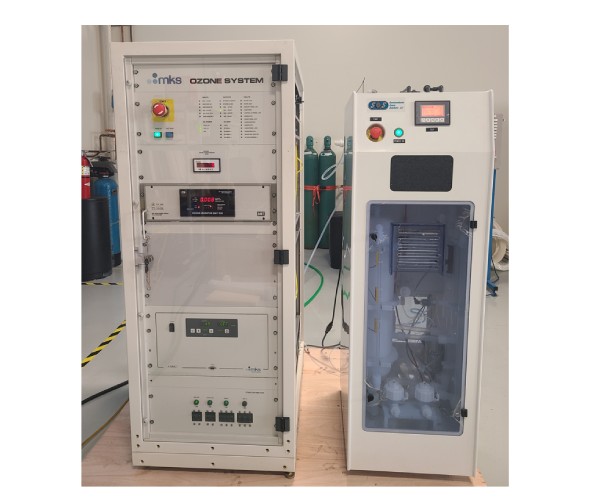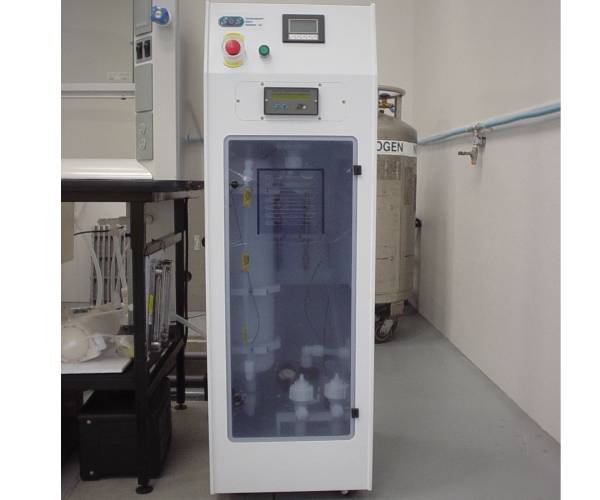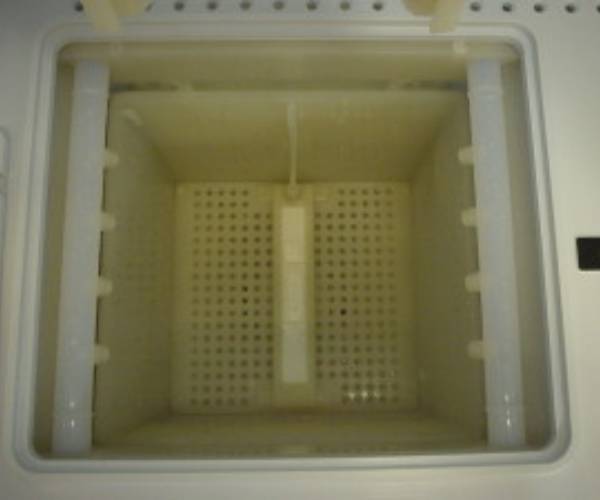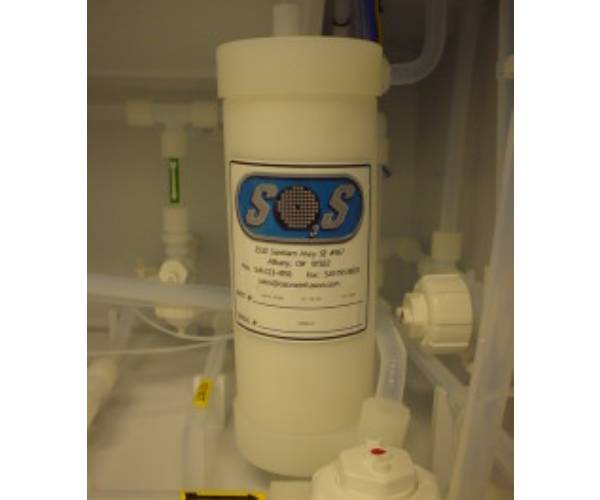In-Line Ozone Injection System
Built to be installed in series with the DI water flow path, this compact infusion system is a very innovative design. Our hardware and software work seamlessly together to deliver DIO3 flows up to 60 LPM at 20 PPM. Utilizing a combination of infusion techniques in combination with fluid blending to produce exceptional results. Our systems are configurable to deliver gaseous or bubble free DIO3 at levels between 5 and 30 PPM. The SOS hardware is designed to maximize O3 gas transfer efficiency and performance. The injection system utilizes a PLC controller with touch screen interface to provide excellent flexibility and robust performance. All of our systems arrive preconfigured and fine tuned to enable quick installation startup. Process optimization is generally achieved through higher PPM levels then can be obtained by the in-line infuser alone. The proper utilization of a combination of infusion products both integral to the process or rinse tank and in-line injection can dramatically increase your resist strip speed and consistency. By proper optimization and utilization of S.O.S comprehensive infuser products resist removal rates are optimized.
Ozone Injection System
Surface conversion of H terminated silicon requires a bubble free approach to achieve oxide uniformity and proper thickness. Generally much lower DI flow rates are utilized to achieve this. Flow rates of 10 LPM and ozone concentrations of 8-10 PPM are typical for oxide growth. The SOS injection system can rapidly produce bubble free PPM levels in excess of 15 PPM just 15 seconds after O3 generation power on.
DIO3 Injection System
Regardless of whether your production process is following more standard sequences or the more sophisticated Omni clean chemical combinations, Ozone and ultra pure water can produce extraordinary improvements and results. Ozone and water can remove wax and organics post CMP before an oxide strip step. Ozone De-ionized rinse water after HF based processes will help eliminate the formations of silicic acid on bare silicon surfaces exposed during the oxide removal step. In post HF oxide strip steps ozonated rinse water is often used to convert the hydrogen terminated Hydrophobic surface to Hydrophilic reducing water marks and particle redeposition by growing a predicable protective oxide layer typically 6 – 20 A thick depending on the concentration of the ozone. Without this protective layer surface roughness can occur as the wafers are lowered into SC1. This surface roughness and formation of oxide in the SC1 degrades gate oxide integrity. Without ozone during a post HF rinse native oxide growth can occur. This native oxide also interferes with contacts and degrades critical oxide gates creating problems with devices lowering operational efficiency. Ozone injection within rinse water tanks provides the consistent predictable device characteristics required by today’s sophisticated products.
DIO3 Ozone Infusion Cabinet with Controller
If you already have an ozone delivery system but need to provide DIO3 to a new tool for testing or production, SOS has the perfect solution. Our DIO3 infusion and delivery cabinet uses ozone from your existing supply to deliver DIO3 directly to your point of use. The system can generate up to 30 PPM at 40 LPM for a single output, or 20 LPM per output in dual-output applications.
This cost-effective solution allows you to develop your DIO3-based process and collect data on cost savings per pattern without the need for expensive upgrades. With a compact footprint, these units can be placed almost anywhere in your facility.
Get a Quote
"*" indicates required fields









